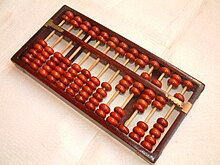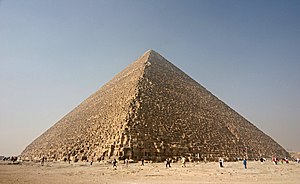One day, I'd like to see the entire world built as Moviestorm packs, then I can make any movie I can imagine. I want spaceships and salsa dancing. I want Aztecs and angels. I want janitors and jelly donuts. I want to make Boy's Own Adventure movies. And vampire cowboy movies. And steampunk James Bond movies. And post-apocalyptic Cthulhu mysteries. And everything else I haven't even thought of yet. I want it all, and so do you.
The other day I was looking back at some of the early Moviestorm documentation, going back to about 2005. Right back then, we were grappling with the problem of content, and how much of it there was to build, and how the hell we were going to break it down into manageable chunks. And, of course, where the hell we were going to start.
Here's how I approached it. Being an anthropologist by training, I got systematic with it.
- Prehistoric
- Biblical (i.e. 10,000 BC - 500 BC)
- Classical
- Dark Ages (to 1000 AD)
- One per century until 1800 (8 centuries)
- Regency
- Early Victorian
- Late Victorian
- One per decade until modern day (10 decades)
- Near future
- Fantasy
- Science Fiction
Where does the movie take place?
Within each of those time periods, I split it into the main geographic areas or nationalities. For the 13th century, for example, I had Western Europe, Moors, Crusaders, America (think Columbus), feudal Japan, China and Mongols.
For periods like fantasy & SF, I used different reference styles, e.g. Lord of the Rings, Conan or Cinderella, or Star Wars, Superman, Star Trek, and Mars Attacks.
In later periods you get much more diversity, so it averaged out at about 25 geographic blocks per time period.
Who are the characters?
Then I looked at the social or occupational groups in each of those blocks. Typically for historical periods you can get away with nobles & royalty, commoners, soldiers, priests, artisans and merchants. In more modern periods, you get many more groups, often based around music or specialised occupations. So in 1960s Britain, we'd have teddy boys, mods, rockers, hippies, shopkeepers, nurses, West Indians, city gents, the jet set, the Chelsea style, and so on. Again, it averaged out at about 25 groups per block.
For each of those groups, I figured we'd need between 5 and 100 customisable costumes, each in male and female variants. So the modern American military group would need both combat and dress uniforms for Army, Marines, Air Force, and Navy, covering different ranks and specialisations, and for different environments (desert, jungle, urban, arctic, etc).
Ancient Egyptian priests, by contrast, could be quite small, maybe only 6 variants: High priest & priestess, junior priest & priestess, acolyte (male & female). 1960s British City Gents are a pretty small group too: all you need is a couple of different pinstripe suits with and without waistcoats, bowler hats, umbrella, and briefcase, and then one in his shirt sleeves.
I didn't get anything like all the way through this bit of the analysis, but I guessed at an average of 30 costumes per group.
So, that's how many costumes?
That works out at 28 periods x 25 places x 25 groups x 30 costumes. To save you getting out your calculating device, that's a little over 500,000 costumes. And that was just adult human characters. I didn't even get into robots, aliens, mutants, monsters, dinosaurs, cartoon characters, anime style, kids, babies, old people, or talking animals...
Choose your location
Now let's think about sets. Take the same mix of times and places, then think of the different environments in each of those: domestic, military, commercial, governmental, urban, rural, wilderness, scientific (and if you're feeling cinematic, throw in underwater, space, etc).
For each of those, come up with a list of specific sets. For a Western environment, for example, I cam up with a ranch (interior and exterior), several different types of church, a couple of saloons (high-class and dingy), a barn, a general store, a miner's trading post, a bank, a mine, a pass, the desert, open prairie, an Indian village, a courthouse, a jailhouse, a schoolhouse, Main Street, a hotel, a bordello, a cowboy camp, a livery stable, a fancy home, Boot Hill, the railroad station, farmland, a meeting hall, adobe houses, Mexican cantina, corral, ghost town, fort, military encampment, casino, steamboat, blacksmith, jailhouse, and so on. Watch a few John Wayne movies, spaghetti Westerns and Deadwood and you'll probably come up with a few more.
That worked out at about 50,000 sets, each potentially requiring buildings, props, vehicles, trees, furniture, and more.
What actually happens in your movie?
Then do a similar process for animations, and ask yourself "what can people do"? I found it easiest to break this down by looking through the social groups in the costumes section, and asking myself "what would these people do?" And then looking through the sets and the props for each one, and asking "what happens here?". Finally I watched a bunch of popular movies, and asked "what are these actors actually doing?" You get a pretty big overlap, but you get a huge list of categories. So you might end up with "work in an office", "buy something", "chat", "dance", or "commit murder".
Then, for each of those categories, list out a bunch of interesting and useful variants. At one point, I actually drew up a list of 50 ways to kill someone in a movie, ranging from "stab them in the back" to "drown them in the bath", "poison them", and "push them down the stairs". And that was before thinking of all the weird Final Destination type grisly endings!
I want the world, and I want it now!
Building all that would be a monumental task. At a week per costume, it would take more than ten thousand man-years just to build the characters. With the sets and animations as well, it's about twenty-five thousand man years, about the same as it took to build the Great Pyramid of Giza. Or, to put it another way, if we'd had a thousand artists on staff from the day we made the very first prototype of Moviestorm, we wouldn't even be a quarter of the way through yet.
So far, we've made 30-odd packs, including over a hundred costumes, and about 60 stock sets, and thousands of animations. That's not bad for a team that's never had more than five artists in. It's certainly a hell of a lot more versatility than you'd get if you were making machinima in most games. But when you break the world down this way, you realise just how much there is left to build.












